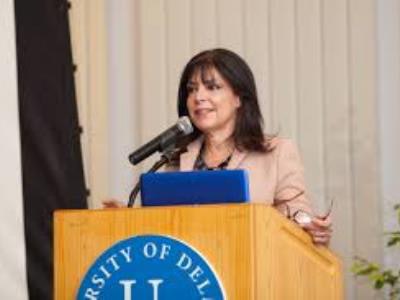COSTA MESA, Calif. ― A three-day leadership symposium for the National Community College Hispanic Council (NCCHC) that concluded over the weekend focused on addressing institutional strategies that impact the success of Latinx students.
 NCCHC President Maria Harper-Marinick said, “For the majority of Latinos in the United States, the academic journey begins at the community college.”
NCCHC President Maria Harper-Marinick said, “For the majority of Latinos in the United States, the academic journey begins at the community college.”As an affiliate council of the American Association of Community Colleges (AACC), more than 200 NCCHC members gathered for the 21st year to discuss issues that included student affairs leadership, leveraging resources for foster care and homeless students, and access to higher education for undocumented students. Presidents, administrators, faculty and students were among the participants that celebrated the conference’s theme, A New Day for Latinos in Community Colleges.
“We wanted to bring together leaders and aspiring leaders to discuss the latest education research and best practices to serve Latino students since the demographic is growing in community colleges nationwide,” said Maria Harper-Marinick, chancellor of the Maricopa Community College District and NCCHC president. “For the majority of Latinos in the United States, the academic journey begins at the community college so it is a new day for us, and it is our responsibility as leaders to make sure they feel welcome and provide a culturally competent environment.”
As an NCCHC board member and assistant professor at California State University ― Fresno, Ignacio Hernández Jr. understands the necessity of diversity and equity beyond the student body at community colleges.
“Leadership composition among faculty, administrators and trustees is just as important,” he said. “In addition to hosting professional development opportunities for community college leadership, the NCCHC symposium provides a space where Latino faculty and administrators can feel supported just like the students we serve.”
With a renewed focus on community college student success, accountability and outcomes in community colleges, the NCCHC symposium sessions underscored the necessity of additional support being especially important to Latinx students.
“It is up to us to identify the challenges community college Latino students face but also to let them know there is hope,” said Harper-Marinick.
For NCCHC, strengthening diversity and equity at community college includes supporting foster youth. Many community college students are homeless, at-risk of becoming homeless, or have been through the foster care system. In the session on leveraging resources for foster care and homeless students, participants said that filling out the Free Application for Federal Student Aid (FAFSA) can be an obstacle for students.
“FAFSA questions on whether shelters are monitored by the federal government through Housing and Urban Development are not easy to answer for anyone let alone students aging out of the system,” said Tracy Fried, a foster youth advocate and consultant.
“Many students are low-income; other are in some cases homeless and need support just like everyone else. That is the difference between equity and equality. These are real challenges, and it’s not as if students would not want to be full-time if they could afford it,” said Harper-Marinick.
“Students are not always comfortable admitting they are foster youth or at-risk of becoming homeless, so administrators need to understand that just caring for students however you can will make a difference,” said Fried.
“We know that when students are going full-time they perform better, but the reality for students, especially our Latino students, is that many of them have families they are caring for. Some are single mothers. Their lives are complex and have challenges. If only 25% of Maricopa students for example are full-time, what are we doing to support the 75% of community college students that are part-time?” said Harper-Marinick.
Although a cultural shift toward diversity and equity is more common, not all student service offices on community college campuses are aware of what each does to better support their underrepresented students.
“Partnerships within student services are critical on community college campuses,” said Fried. “Unfortunately many foster care students become homeless as data indicate a direct correlation to contact with the foster care system and homelessness. Retention for foster care is also difficult when some students are unwilling to identify themselves as homeless or at-risk of becoming homeless.”
The NCCHC symposium held other sessions on why diversity and equity matters, how to diversify faculty and administrators, facilitate meaningful contributions to diversity and emphasized their commitment to student access and success regardless of immigration status at community colleges.
Jamal E. Mazyck can be reached at [email protected] and on Twitter at @jmbeyond7.















